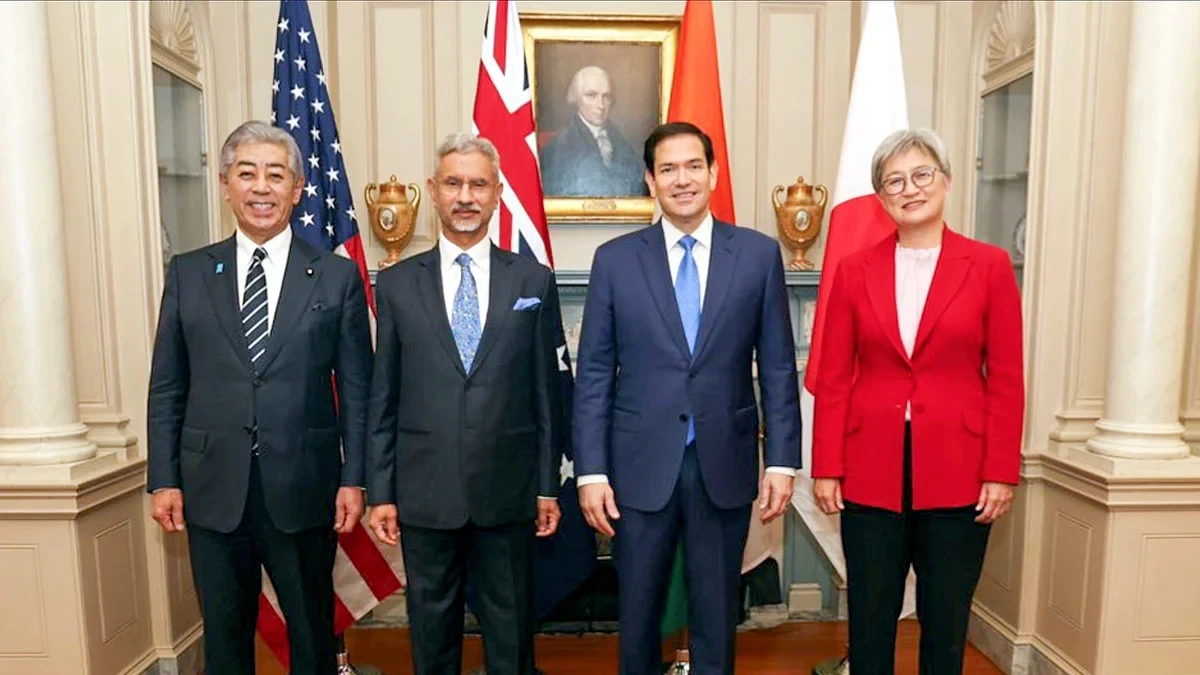The recent G7 Summit laid bare the growing divergence within the Western alliance. Once seen as the bedrock of unity and values-based coordination, the G7 now struggles with internal fractures and a shifting transatlantic balance.
Amid the global flux, the Indo-Pacific remains the primary theatre of geopolitical competition.
The Quad foreign ministers’ meeting on July 1 reinforced this. However, the region’s key players -India, Japan, Australia, and South Korea – find themselves increasingly at the receiving end of an unpredictable US foreign policy that continues to pursue a “US First” approach, despite rhetorical commitments to alliances.
Around the G7, we saw PM Modi decline an impromptu invitation to be in Washington, DC. We became aware that Japan postponed its 2+2 with the USA mainly to avoid pressure on raising defence budgets. Australia is awaiting an invitation to visit the White House despite being a Quad partner.
The question, therefore, is timely and urgent: Should the Indo-Pacific partners of the US better coordinate among themselves to deal with evolving US policy? More importantly, should they chart out a more coherent, collective Asian response – not just to China’s assertiveness, but also to shifting American priorities?
The US remains indispensable to the Indo-Pacific balance of power. Yet its allies and partners are witnessing a pattern of inconsistency. From abrupt withdrawals in the Middle East and Afghanistan, attacking Iran, to transactional ties under the Trump administration, the trust deficit is growing.
Even within current frameworks like the Quad, IPEF, and trilaterals (e.g., US-Japan-Korea), the coordination is often Washington-led. This vertical dynamic dilutes strategic autonomy and complicates regional responses to both American shifts and Chinese provocations. For instance, while Washington oscillates between economic decoupling and selective engagement with Beijing, regional partners must navigate trade dependencies, security threats, and domestic pressures without a clear consensus.
India, Japan, South Korea, and Australia are not mere appendages to US policy. They are mature middle powers with distinct capabilities, converging interests, and growing strategic weight. All four are democratic, technologically advanced, and share concerns over China’s regional behaviour – from grey-zone coercion to trade weaponisation.
However, they differ significantly in their threat perceptions and alignments. India maintains strategic autonomy and hesitates to enter formal alliances. Japan is increasingly assertive under its new defence guidelines but remains constitutionally constrained. South Korea balances its US ties with the need to manage inter-Korean tensions and its economic ties with China. Australia, having weathered Chinese economic coercion, has doubled down on security alignment with the US and is anxious that AUKUS is under review.
This diversity necessitates a more structured intra-Asian consultation mechanism – one that is independent of, though not necessarily opposed to, Washington. Such a platform can allow these four powers to harmonise their expectations, coordinate diplomatic messaging, and even align their defence postures on select issues.
Beyond the Quad
The Quad has provided a useful beginning in building habits of cooperation among India, Japan, Australia, and the US. Yet its mandate remains loosely defined, deliberately non-military, and often seen as symbolic. It may be time to conceive of a broader Indo-Pacific “strategic compact” or dialogue forum involving India, Japan, South Korea, and Australia.
Such a mechanism could facilitate policy coordination on addressing US unpredictability, ensuring that their national interests are more effectively reflected in alliance decisions. It could develop shared positions on regional economic integration, technological standards, and infrastructure investment to counterbalance China’s Belt and Road Initiative.
The forum can send a message that the region is not merely a theatre for great-power rivalry but a site for Asian-led multilateralism.
Coordinated Indo-Pacific responses need not imply bloc politics. Instead, they can reflect a calibrated convergence where middle powers cooperate based on principles of sovereignty, rules-based order, and regional stability. A more aligned Indo-Pacific voice can also shape US policy constructively, pushing Washington towards more consistent, consultative, and credible engagement. Such coordination also enhances the capacity to respond to China, not with containment rhetoric, but with smart balancing.
In an era where global governance is fraying and American leadership is increasingly inward-looking, Indo-Pacific powers must assume greater responsibility for the regional order. India, Japan, South
Korea, and Australia, by working more closely with each other, can bridge strategic gaps, reduce dependency on unilateral decisions by Washington, and present a united front against destabilising forces in the region.
The future of the Indo-Pacific cannot be left to the whims of external powers. It must be shaped by the vision, resolve, and coordination of the region’s leading democracies. An Asian-led strategic convergence is no longer a choice but an imperative.
